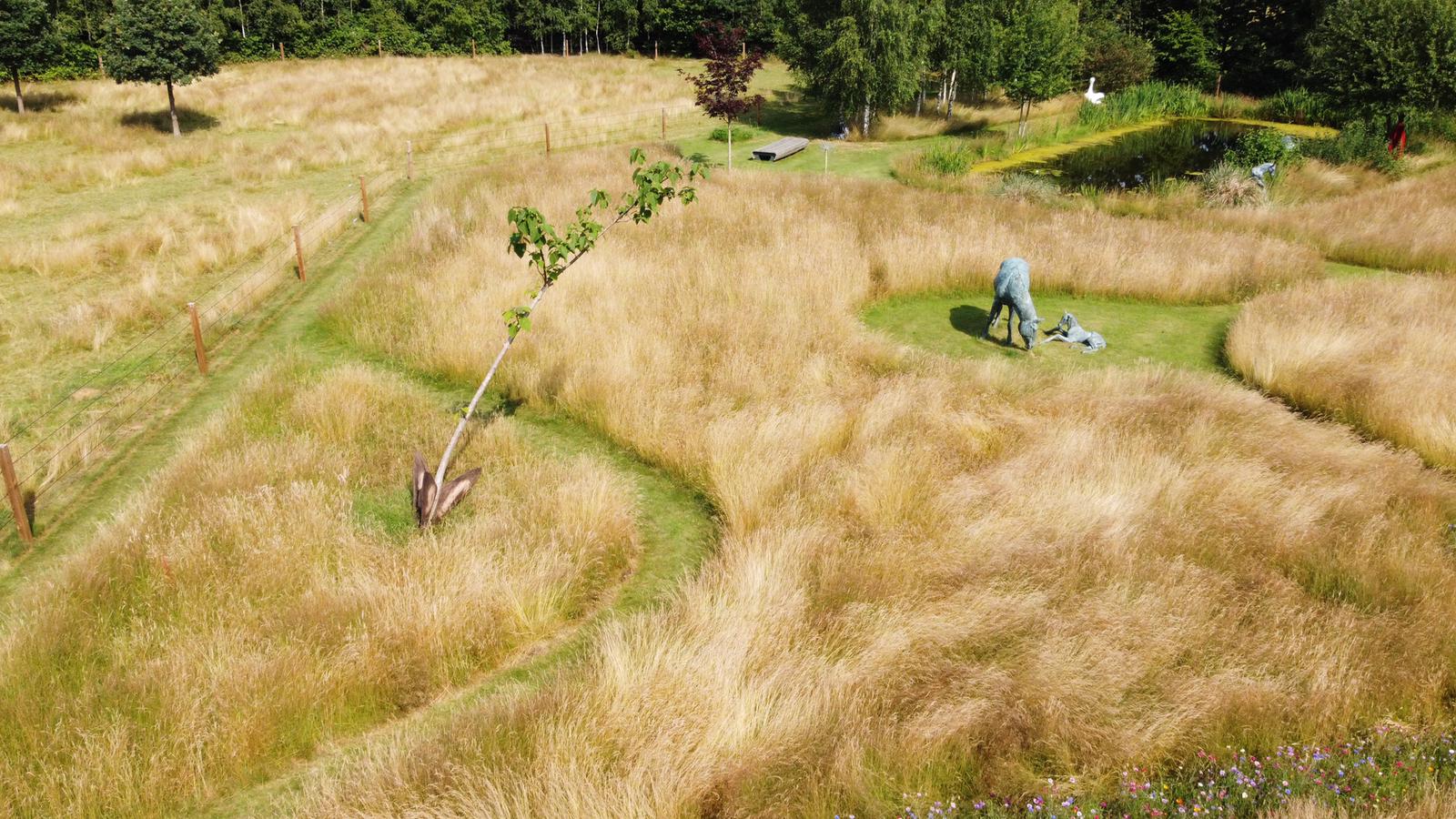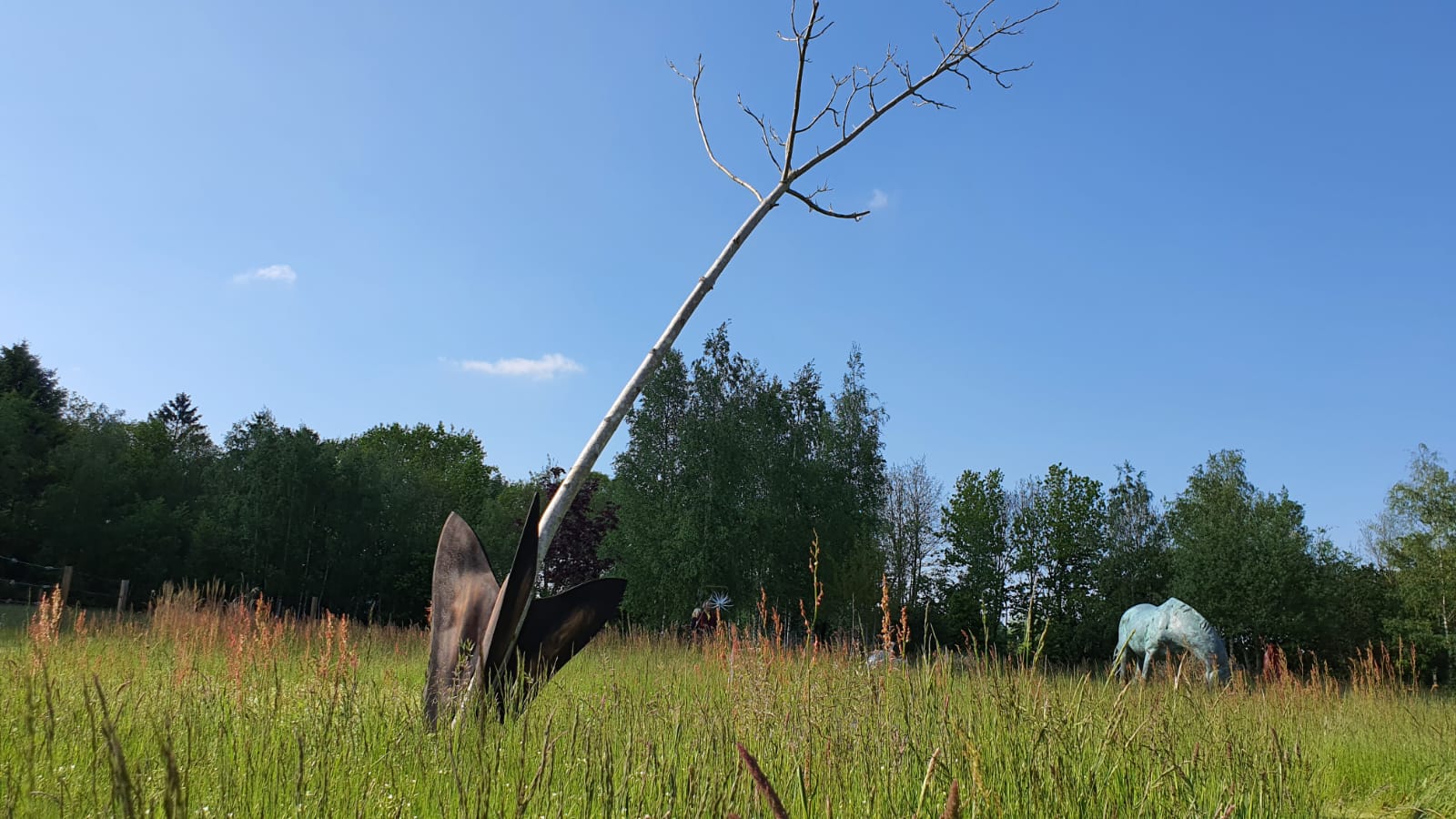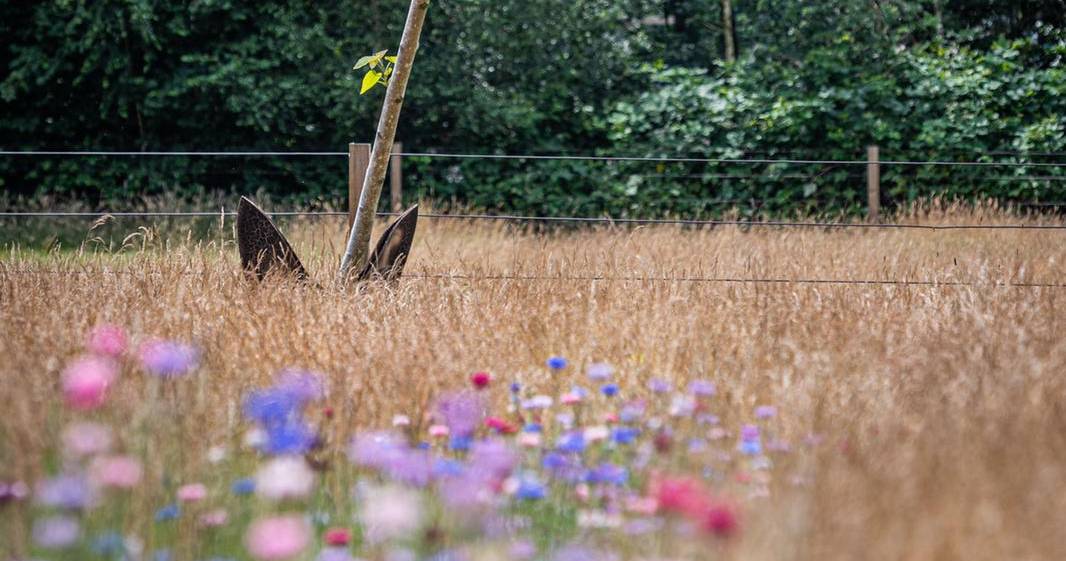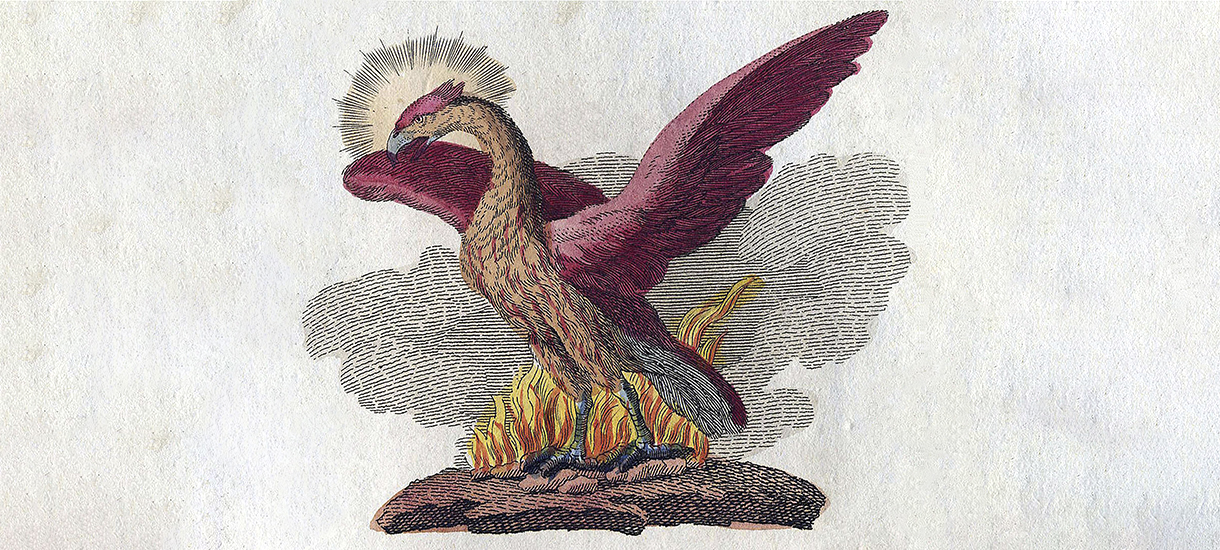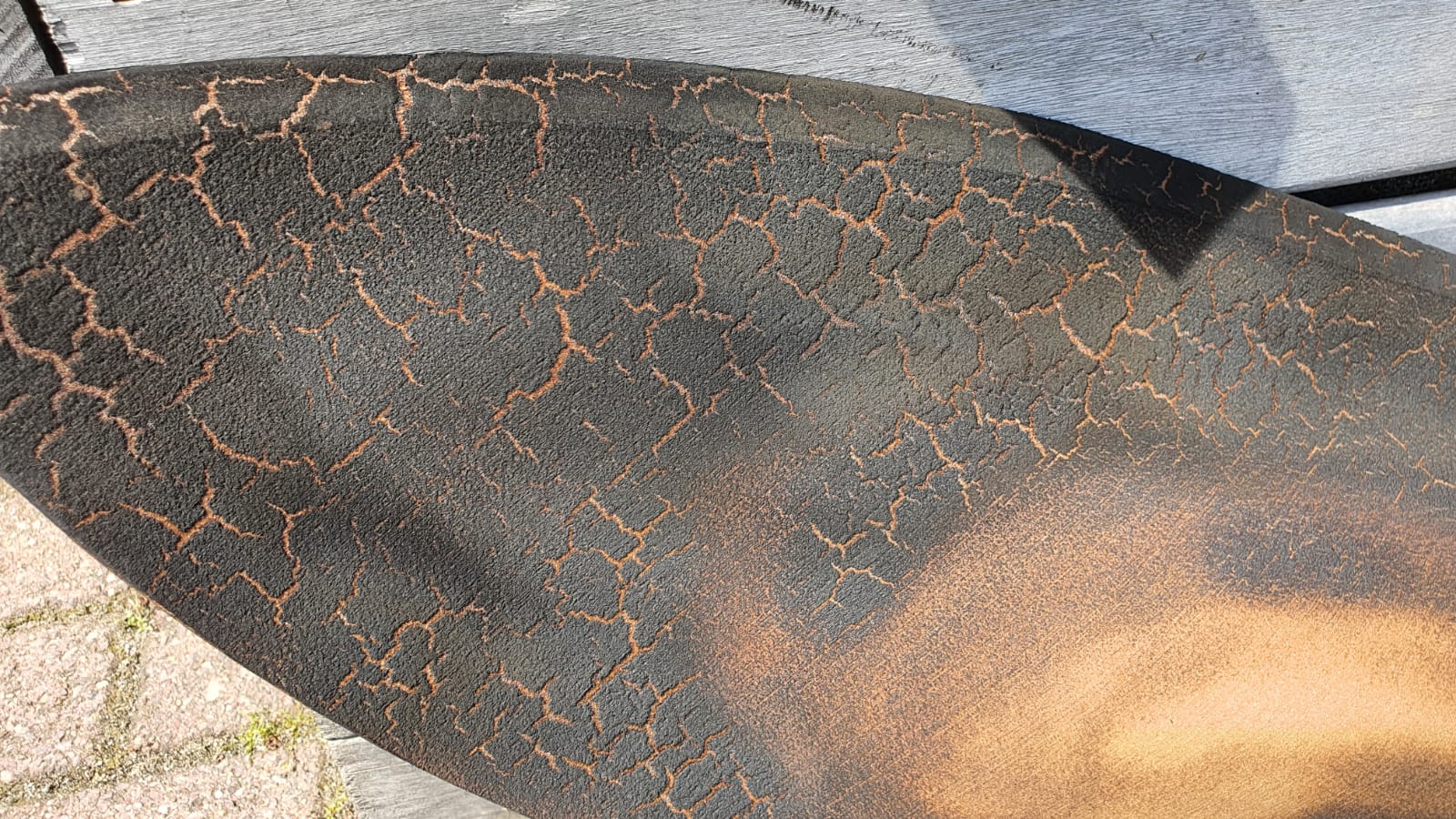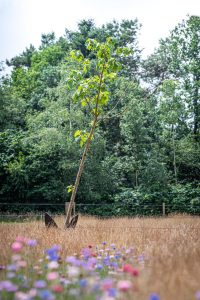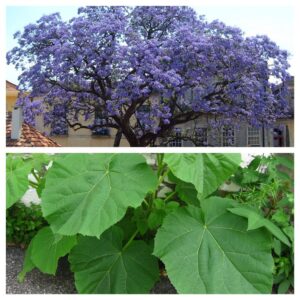Phoenix Boompijl planted in TAK Artspace Ermelo
Commissioned by sculpture garden TAK Artspace in Ermelo we made a Phoenix Boompijl with a burned arrowhead, as if the tree rises from its own ashes.. We used a five and a half meter high Paulownia Tomentosa, a very special pioneer tree. In addition to allowing the Phoenix tree to shine among other works of art on the estate, TAK owner Arnoudt Geerars enthusiastically participates in our research into the cultivation and maintenance of slanting trees.
Plan your visit
From 28 May 2021 ons, the Phoenix tree is on show from Thursday – Sunday. Reserve a time slot at www.takartspace.com.
Adsress: TAK Art Space, Hessenmeer 88, 3852 NZ Speuld (Ermelo), The Netherlands
Read the full story of this legendary tree below.
Phoenix and eternal life
Legend has it that the Phoenix only alights on the Paoulownia Tomentosa tree. And only if a good ruler is in power. Then she will bring prosperity and wisdom. Why would the Phoenix choose this tree? Is it because her leaves are very huge and softly hairy? Or because her lilac flowers smell so good? Or because the Paulownia, like the Phoenix, has eternal life? If you saw the Paulownia all the way down to just above the ground, a new tree will simply grow from the stump. And it happens so fast that you can almost watch it grow.
Pioneer tree
Paulownia Tomentosa is known for growing incredibly fast, even under the most appalling conditions. It is therefore often used as a pioneer tree to make polluted areas healthy, rich in humus and suitable for other vegetation. Because the Paulownia needs a lot of sun, it withdraws when other trees grow higher. If that’s not a pioneer! There are people who believe the Paulownia is the ultimate solution to the CO2 problem in the world. The tree absorbs ten times more CO2 than other trees: 103 tons of carbon dioxide per year per hectare.
Paulownia Tomentosa on the Boompijl Test Field
We do research into the rapid growth of the Paulownia not only on the TAK Artspace estate. We also have a number of specimens on our Boompijl test field at nursery Schout that we ‘train’ to grow obliquely. Two trees have been placed at an angle, at an angle of 60 degrees, two we have cut off and we are leading them straight up from the first new growth. And the latter uses weights to get in shape. The investigation started in March 2021. Now we have to wait for the first results.
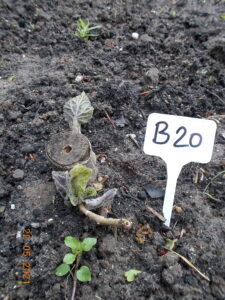
On the Boompijl Test Field Paulownia Tomentosa B20 started a new life (picture taken 25 May 2021).
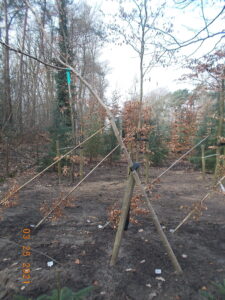
Paulownia Tomentosa A4, planted ( 65 degrees) on 3 March 2021, (Boompijl test field Waalre).
Origin and name
The tree is native to Central and Western China. It is named after Anna Pavlovna of Russia, daughter of a Russian Tsar. Later she married King Willem II and from 1980 to 1849 was his Queen of the Netherlands. Tomentosa means ‘hairy’. The tree is popularly called Anna Paulownaboom, Princess Tree or Empress Tree.
Invasive?
In North America, the Paulownia is considered an invasive species. Because it grows so quickly and easily, it displaces important native species and destroys ecosystems. In fact, sales of the tree are prohibited in the state of Connecticut. In Northern Europe, the Paulownia is not invasive. Here, the Paulownia will eventually always be outgrown by other species.
www.boompijl.nl
Links:
- Paulownia Trees
- Bloomberg article: We already have the world’s most efficient carbon capture technology
- Article Woestenije
- Paulownia Tomentosa on Wikipedia




